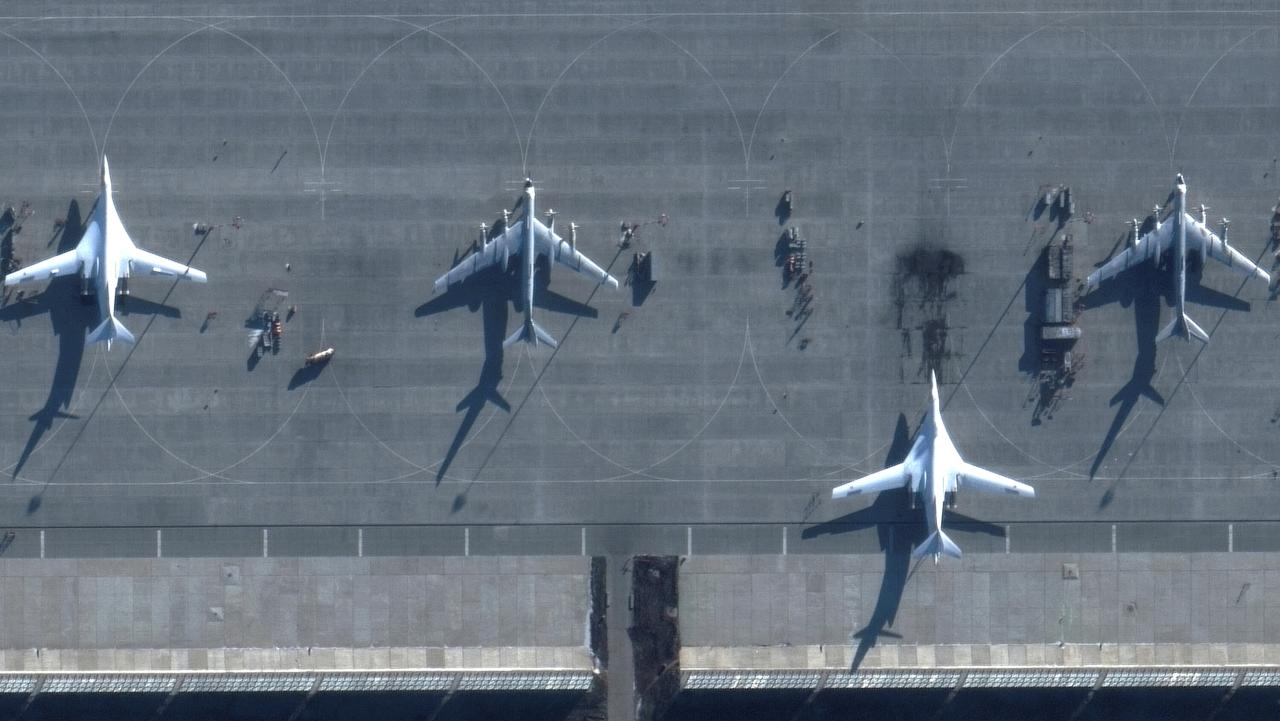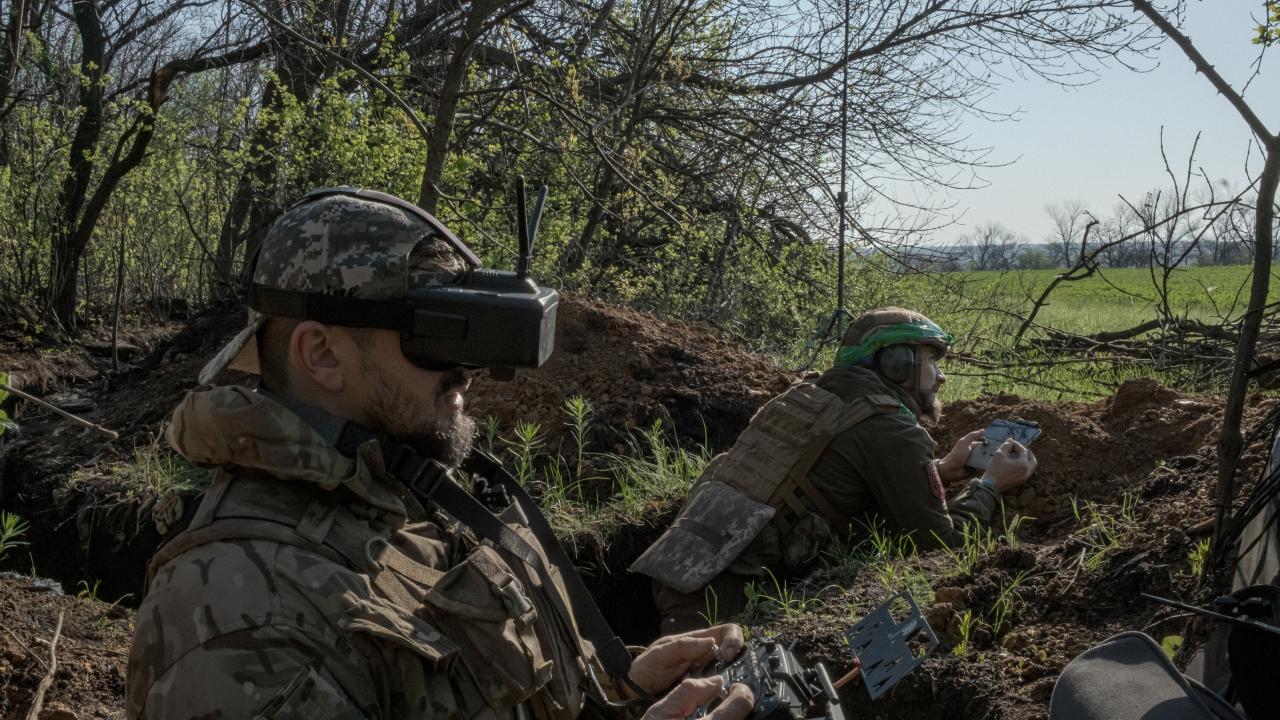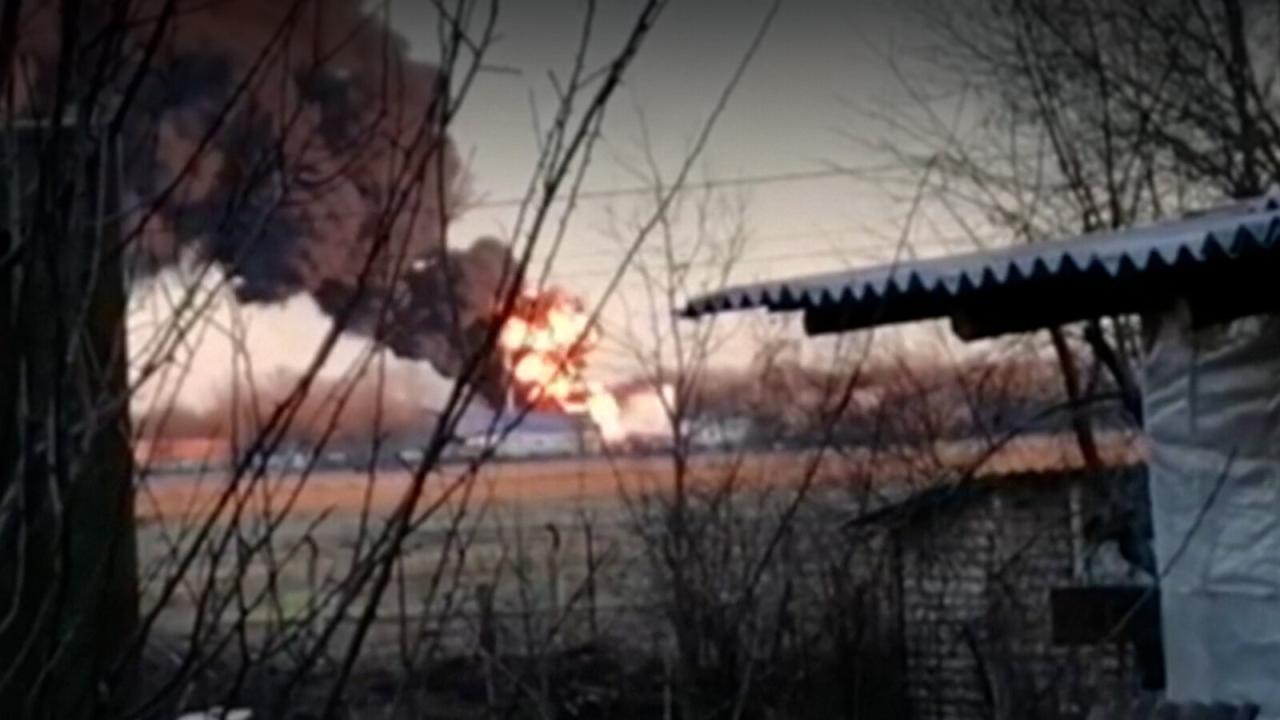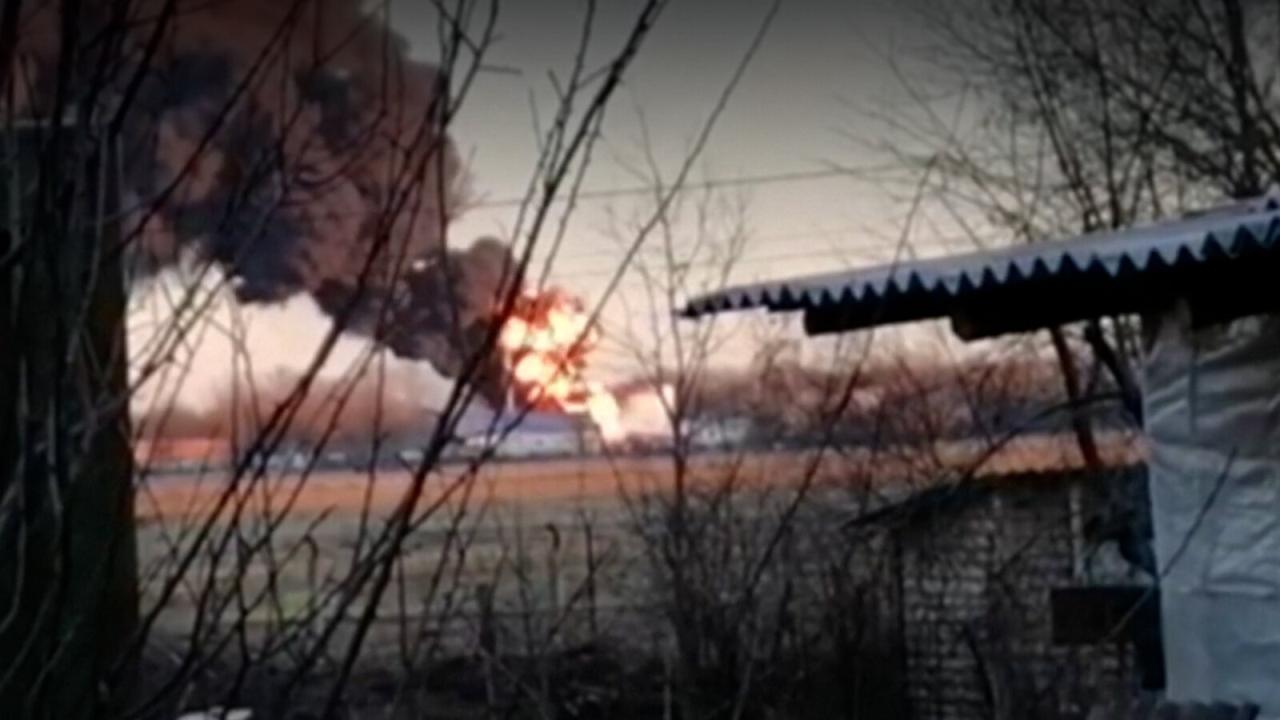Ukraine drone attack on russia – Ukraine drone attacks on Russia have become a significant aspect of the ongoing conflict, raising complex military, political, and legal questions. This analysis delves into the frequency, scale, and targeting of these attacks, examining their impact on both the battlefield and the information war. We will explore the technological advancements showcased, the international response, and the potential future implications of this evolving facet of the war.
Recent drone attacks on Russian territory have highlighted the evolving nature of modern warfare, showcasing the increasing sophistication of unmanned aerial vehicles. The precision and range involved raise questions about surveillance capabilities, similar to those offered by a high-resolution camera system like the one found at the cobequid pass camera , though on a vastly different scale. These attacks underscore the need for robust defense strategies against such technological advancements.
From the types of drones employed and their capabilities to the strategic significance of targeted locations within Russia, we aim to provide a balanced and informative overview. The analysis will also consider the human cost, both military and civilian, and the legal ramifications under international law. This multifaceted examination seeks to provide a clear understanding of the complexities surrounding Ukraine’s use of drones against Russia.
Ukrainian Drone Attacks on Russia
The increasing frequency and sophistication of Ukrainian drone attacks on Russian territory represent a significant development in the ongoing conflict. These attacks, while seemingly limited in their immediate military impact, have far-reaching political, psychological, and technological implications. This analysis examines the various facets of these attacks, from their frequency and targeting to their broader strategic and international consequences.
Frequency and Scale of Drone Attacks
Reports of Ukrainian drone attacks on Russian territory have increased steadily since the beginning of the full-scale invasion in February 2022. Initially, these attacks were sporadic and involved smaller, less sophisticated drones. However, over time, the frequency and scale of attacks have escalated, with larger and more technologically advanced drones being employed. The timeline demonstrates a clear trend of increasing capabilities and ambition.
Various types of drones have been implicated, ranging from commercially available models modified for military use to potentially more advanced systems developed domestically or supplied by allies. These drones vary in their range, payload capacity, and ability to evade detection. Limitations often include vulnerability to electronic countermeasures and susceptibility to weather conditions.
| Date | Location | Drone Type (estimated) | Damage Reported |
|---|---|---|---|
| August 2023 | Moscow | Likely modified commercial drones | Minor damage to buildings; no casualties reported. |
| September 2023 | Pskov Oblast | Potentially more advanced drones with longer range | Damage to several military transport aircraft; casualties reported. |
| October 2023 | Bryansk Oblast | Unspecified | Damage to oil infrastructure; no casualties reported. |
| November 2023 | Krasnodar Krai | Unspecified | Damage to an oil refinery; minor injuries reported. |
Geographic Targeting of Attacks

The primary targets of Ukrainian drone attacks have been strategically chosen to maximize psychological and symbolic impact. Military installations, particularly air bases and logistics hubs, are frequent targets. Attacks on infrastructure crucial to the Russian war effort, such as oil refineries and transportation networks, also feature prominently. The targeting appears to be designed to disrupt Russian military operations and undermine their logistical capabilities.
The strategic significance of these targets lies in their contribution to Russia’s war effort. Disrupting air bases can limit Russia’s ability to launch air strikes and conduct reconnaissance. Targeting infrastructure weakens Russia’s ability to supply its forces and maintain its economy. Patterns suggest a focus on targets deep within Russia, showcasing the expanding range and capabilities of Ukrainian drone technology.
Military and Political Implications, Ukraine drone attack on russia
The drone attacks have undoubtedly impacted the morale of Russian troops and the civilian population. The ability of Ukraine to strike deep within Russian territory undermines the narrative of Russian invincibility and showcases the vulnerability of Russian defenses. While the physical damage from individual attacks may be limited, the cumulative effect on morale and confidence is potentially significant.
Recent drone attacks on Russian territory highlight the evolving nature of modern warfare, showcasing the increasing reliance on unmanned aerial vehicles. The technology involved is sophisticated, and its applications are diverse; consider, for instance, the detailed imagery provided by a system like the cobequid pass camera , which offers a different perspective on surveillance capabilities. This technological advancement, while seemingly unrelated, underscores the broader implications of drone technology in both military and civilian contexts, further complicating the Ukrainian conflict.
The long-term effect on the course of the war is difficult to predict, but these attacks clearly represent a shift in the dynamics of the conflict. They force Russia to allocate resources to defend against these attacks, diverting resources from other aspects of the war effort. The Russian response has included increased air defenses and efforts to suppress information about the attacks.
International Response and Legal Aspects

The international response to the drone attacks has been varied. Some countries have expressed concerns about the potential for escalation, while others have tacitly or openly supported Ukraine’s actions. International organizations have generally refrained from explicitly condemning the attacks, highlighting the complexities of the legal framework surrounding the conflict. The legal implications under international law are complex and subject to differing interpretations.
An escalation of drone attacks could lead to several scenarios. Russia might respond with increased military action against Ukraine, potentially leading to a significant expansion of the conflict. International involvement could increase, either through direct military intervention or through stronger sanctions. The potential for accidental escalation remains a significant concern.
Technological Aspects of the Drones
The Ukrainian drone attacks have showcased significant technological advancements. The drones’ increased range, payload capacity, and ability to evade detection demonstrate improvements in drone technology, potentially incorporating elements of stealth and advanced navigation systems. This points towards future developments in drone technology, particularly in autonomous flight, swarm capabilities, and improved targeting systems.
- Increased range and endurance
- Improved payload capacity
- Enhanced navigation and targeting systems
- Greater ability to evade detection
- Vulnerability to electronic warfare and weather conditions
Propaganda and Information Warfare
Both sides are utilizing the drone attacks for propaganda purposes. Ukraine portrays the attacks as a demonstration of its military capabilities and resolve, highlighting the vulnerability of Russia. Russia, on the other hand, attempts to downplay the impact of the attacks, emphasizing their limited effectiveness and portraying them as acts of terrorism.
The drone attacks significantly impact the information war. The visual nature of the attacks, often captured on video and shared widely on social media, provides powerful imagery that shapes public perception of the conflict. Each side carefully frames the narrative to suit its strategic goals.
Civilian Impact and Casualties
While the primary targets of the drone attacks are military installations and infrastructure, there have been reports of civilian casualties and damage to civilian infrastructure. These incidents raise serious humanitarian concerns and highlight the potential unintended consequences of these attacks. The precise number of civilian casualties remains difficult to verify independently, given the complexities of the conflict and information control by both sides.
Recent drone attacks on Russian territory by Ukraine have highlighted the increasing sophistication of unmanned aerial vehicles. This raises concerns about potential mishaps, similar to the unfortunate drone show accident which underscored the need for stringent safety protocols. Such incidents, whether intentional attacks or accidents, emphasize the critical importance of responsible drone operation and effective regulatory frameworks for this rapidly evolving technology.
| Date | Location | Type of Damage | Casualties Reported |
|---|---|---|---|
| August 2023 | Moscow | Damage to residential buildings | No casualties reported |
| September 2023 | Pskov | Damage to airport infrastructure | Unconfirmed reports of minor injuries |
| October 2023 | Bryansk | Damage to civilian infrastructure near oil facility | Reports of property damage, no confirmed casualties |
| November 2023 | Krasnodar | Damage to oil refinery and surrounding area | Minor injuries reported |
Effectiveness of the Drone Attacks

The overall military effectiveness of the drone attacks is a complex issue. While the attacks have caused damage and disrupted Russian operations, their strategic impact remains debatable. The cost-benefit analysis is also difficult to determine, given the lack of transparency surrounding the resources invested in these attacks and the difficulty in assessing the long-term consequences.
Limitations include the vulnerability of drones to countermeasures, the inherent risks associated with operating drones deep within enemy territory, and the challenges of achieving decisive military outcomes through drone strikes alone. The attacks, however, clearly demonstrate a capability to disrupt and harass the Russian military, creating a significant psychological impact.
The use of drones in the Ukraine-Russia conflict represents a significant shift in modern warfare. This analysis has highlighted the escalating frequency and sophistication of these attacks, their strategic implications, and the complex international and legal ramifications involved. While the effectiveness of these attacks remains a subject of ongoing debate, their impact on the conflict’s trajectory, the information war, and the humanitarian landscape is undeniable.
Further research and analysis are crucial to understanding the long-term consequences of this evolving form of warfare.
Top FAQs: Ukraine Drone Attack On Russia
What is the overall cost of these drone attacks to Ukraine?
Precise figures are unavailable due to the classified nature of military spending. However, the cost involves drone production, maintenance, intelligence gathering, and potential operator training.
How does Russia defend against these drone attacks?
Russia employs various defensive measures, including air defense systems, electronic warfare, and attempts to disrupt drone navigation systems. The effectiveness of these measures varies depending on the drone’s capabilities and the specific circumstances of each attack.
What are the long-term implications of this drone warfare?
The long-term implications are uncertain but may include an arms race in drone technology, the potential for wider adoption of drone warfare by other states, and the further blurring of lines between conventional and unconventional warfare.
